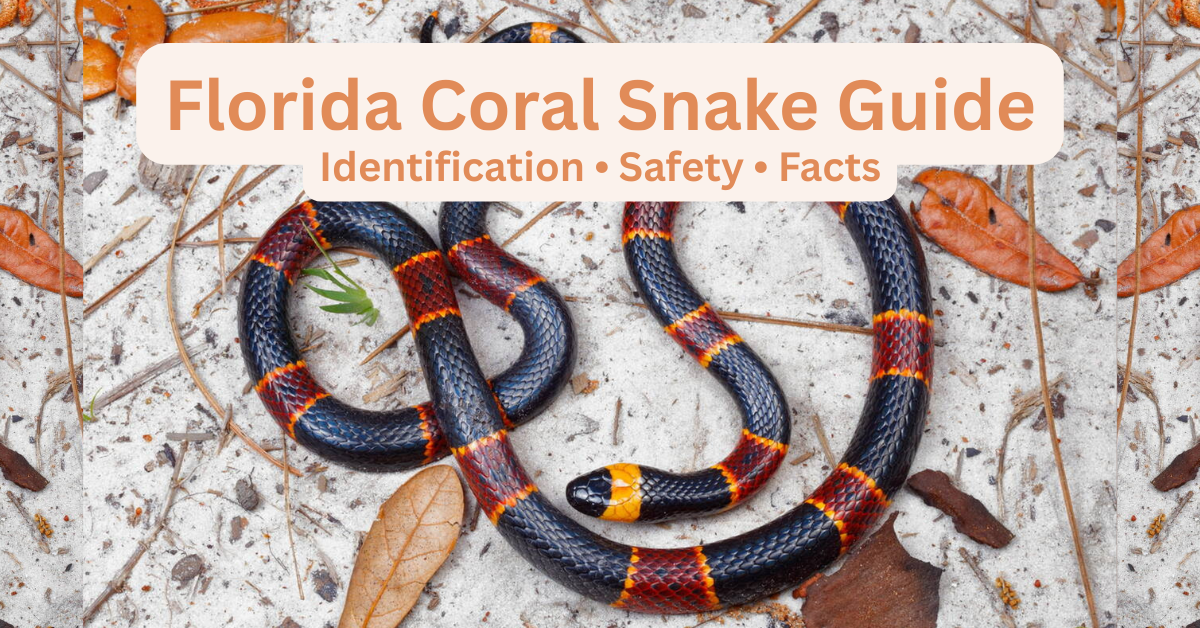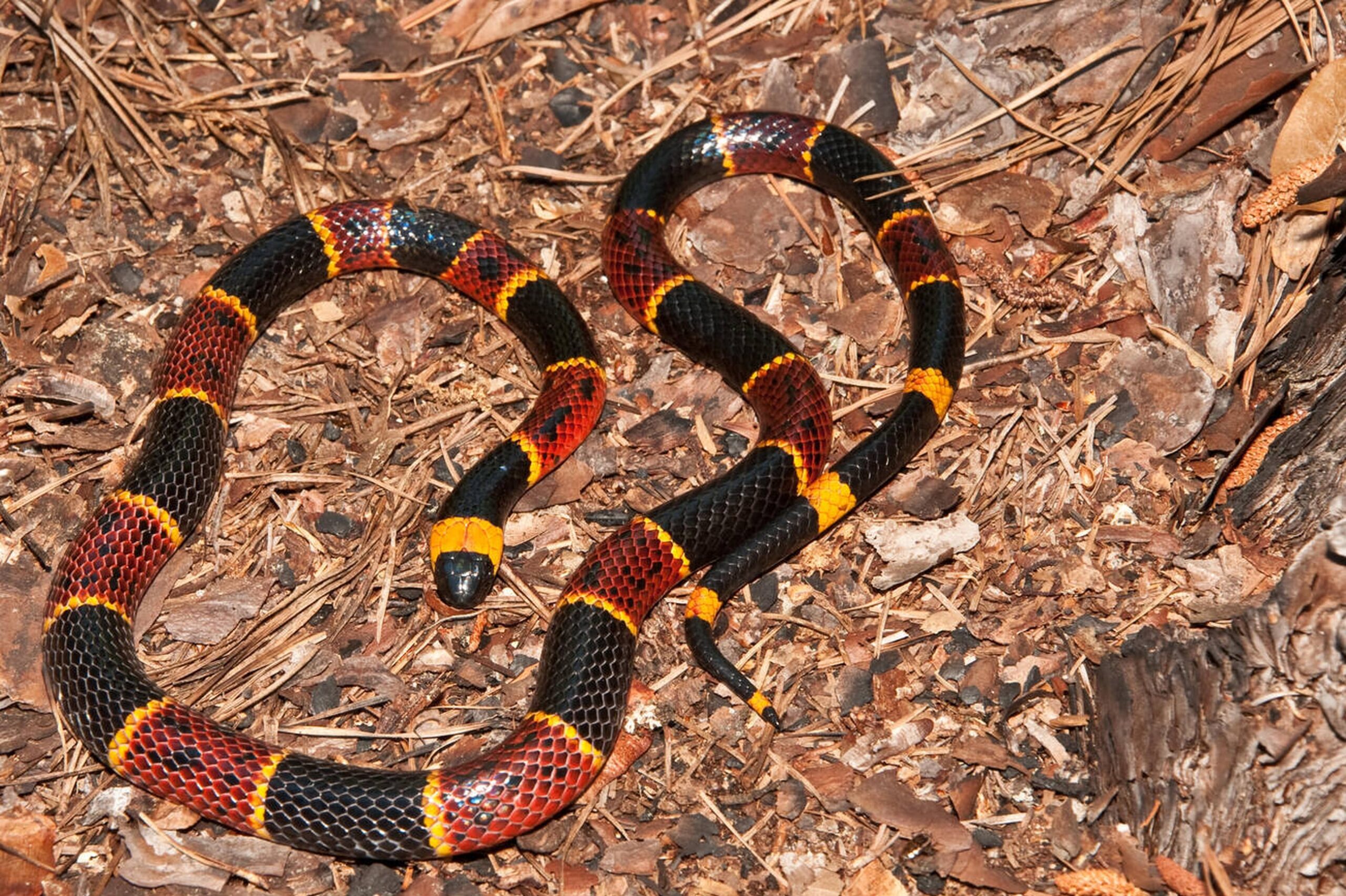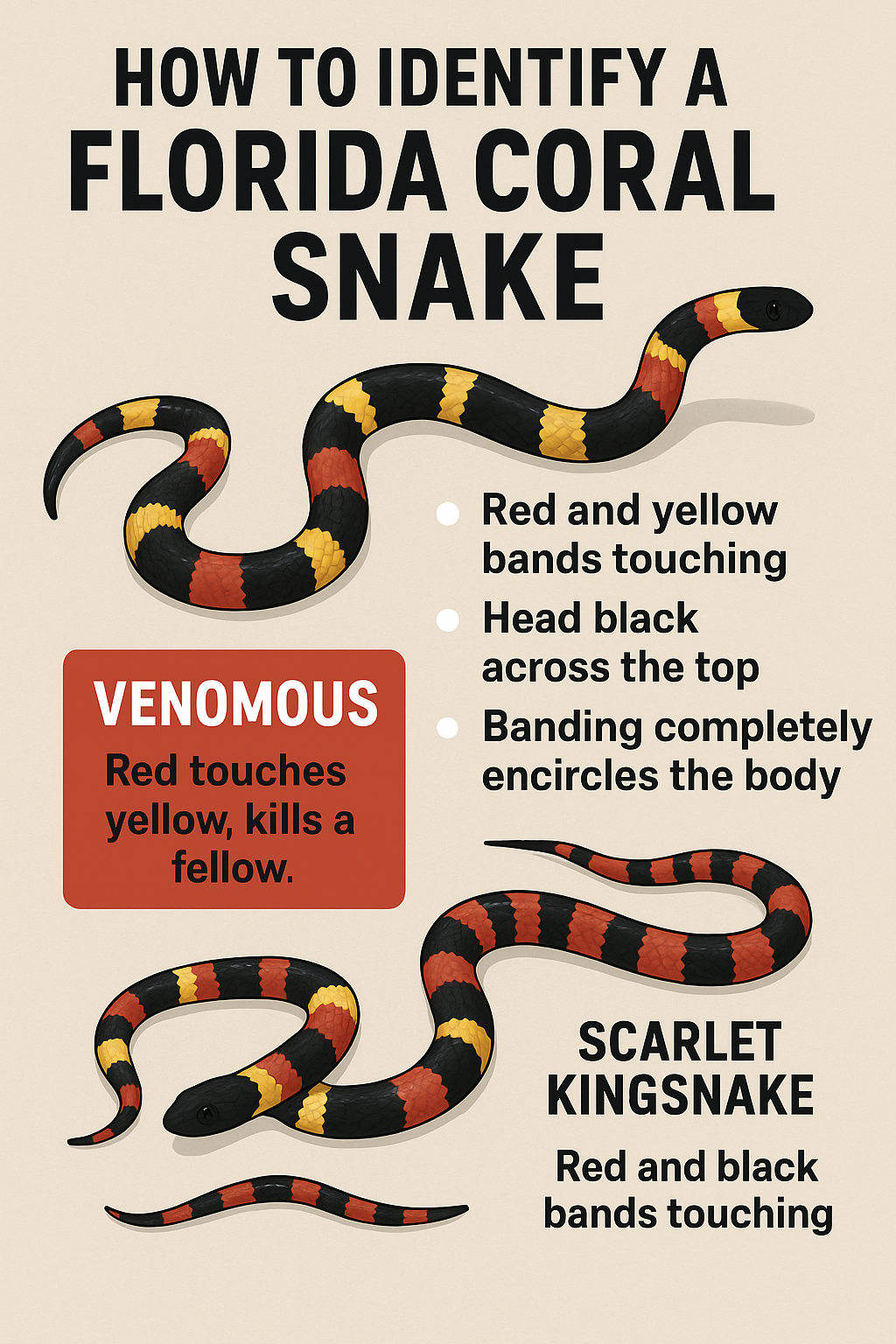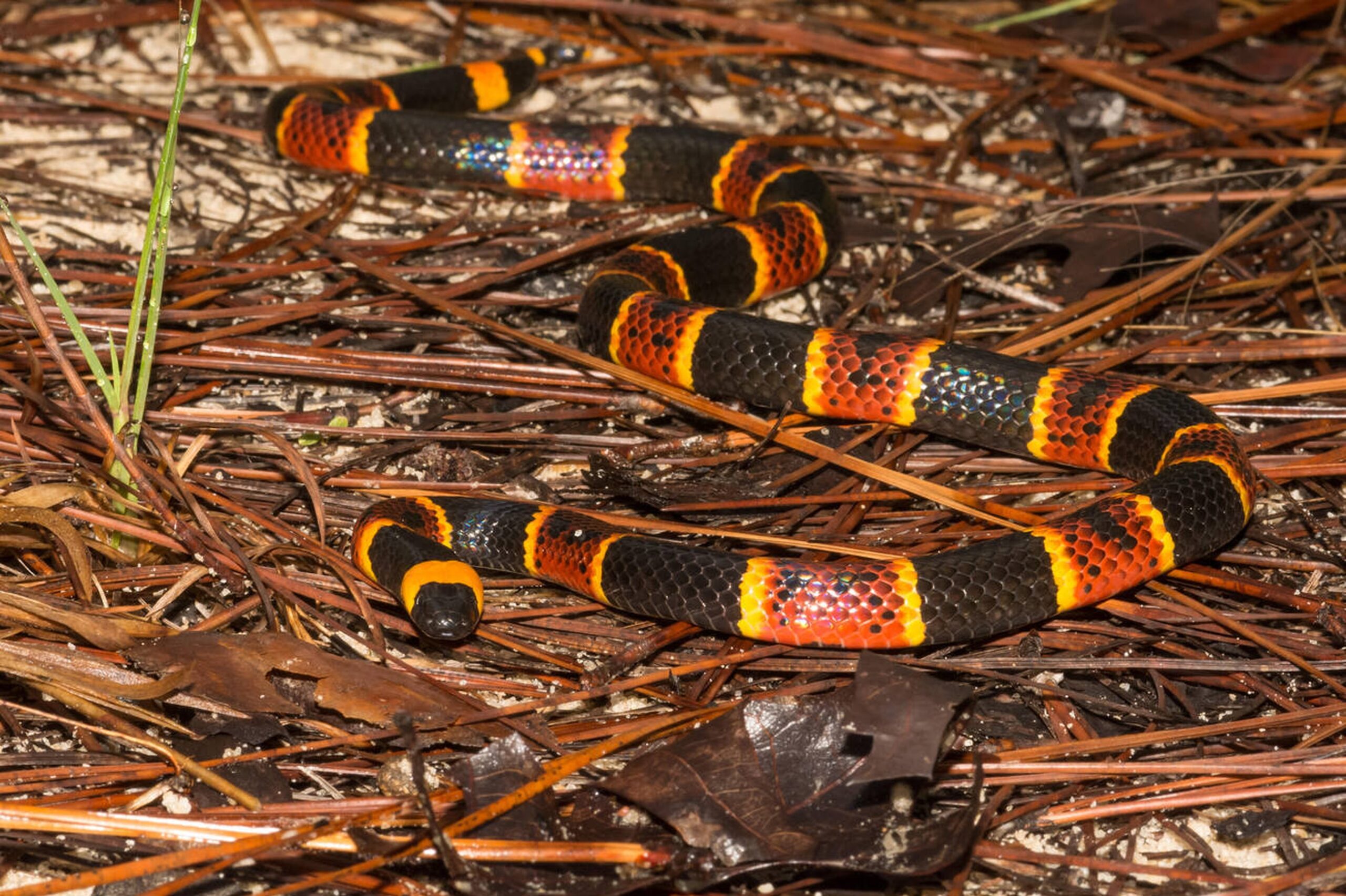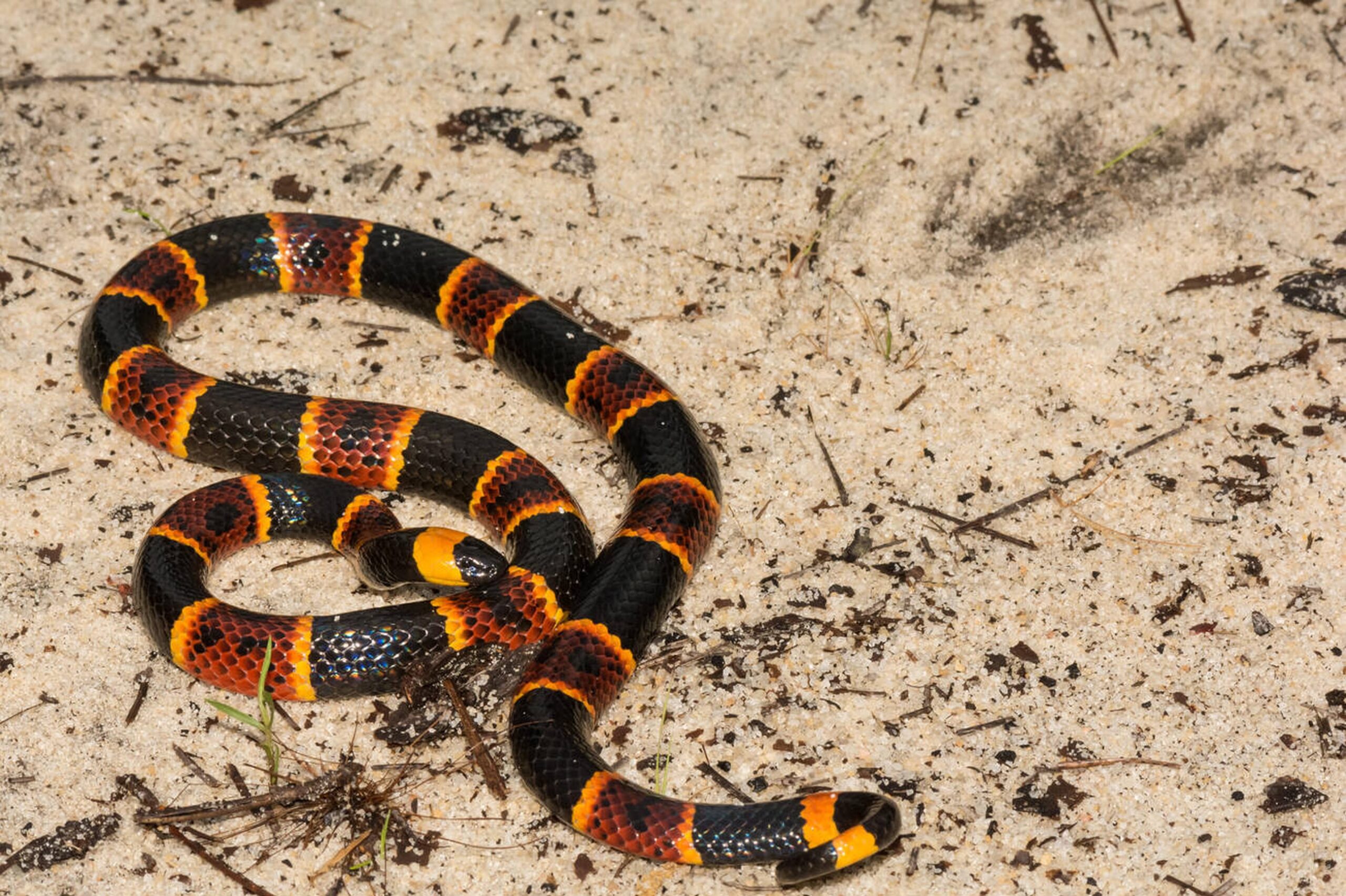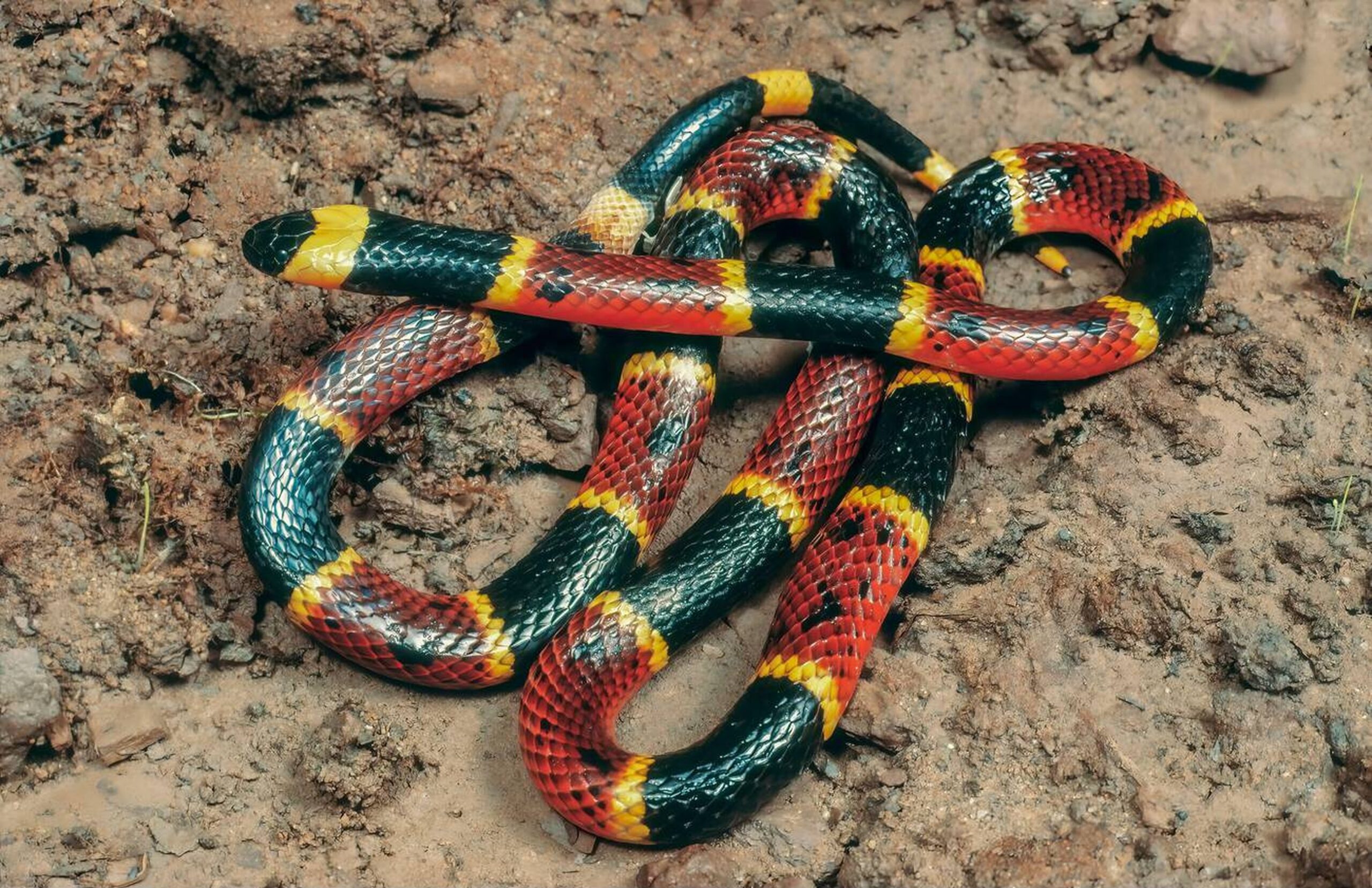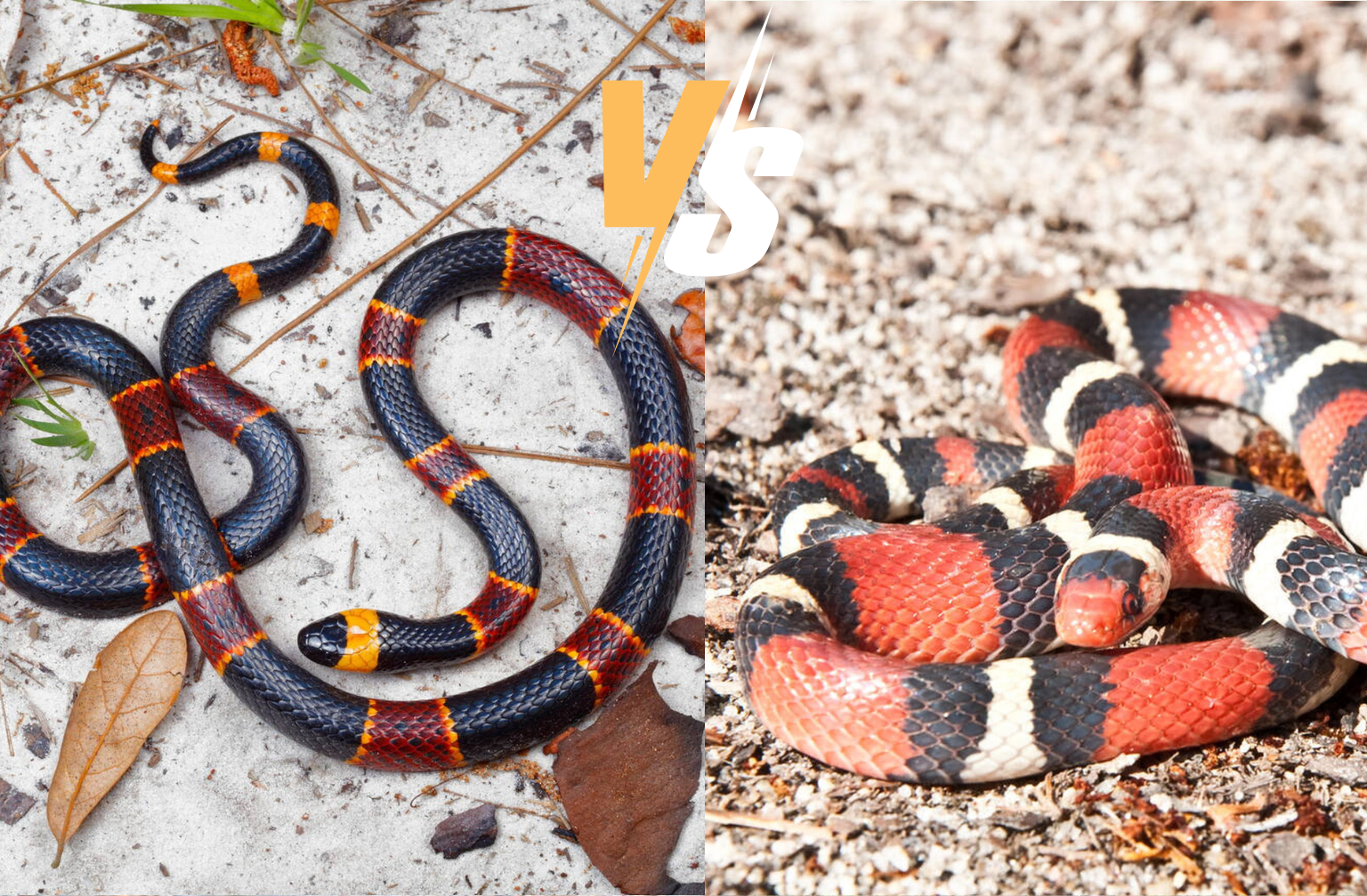Introduction
The Florida Coral Snake (Micrurus fulvius) is one of the most recognizable yet misunderstood snakes in the Sunshine State. With its bright red, yellow, and black bands, this snake has a reputation for being deadly. While it is indeed highly venomous, the Florida Coral Snake is also secretive, shy, and rarely seen. Knowing how to identify it and distinguish it from harmless look-alikes can make all the difference for hikers, homeowners, and wildlife enthusiasts.
Identification – What Does a Florida Coral Snake Look Like?
The Florida Coral Snake is small but striking, usually 20 to 30 inches long. It has a slender body with smooth scales and a black head. Its most distinctive feature is the color banding pattern: red, yellow, and black rings circling the body.
Key Features:
-
Size: 20–30 inches on average
-
Color: Red and yellow bands touching, separated by black bands
-
Head: Entirely black snout
-
Scales: Smooth and shiny
⚠️ The Rhyme for Safety:
Red touches yellow, kills a fellow.
Red touches black, friend of Jack.
This rhyme is the easiest way to distinguish a venomous coral snake from harmless mimics like the scarlet kingsnake or milk snake.
“The Florida Coral Snake is often confused with harmless mimics like the Florida Kingsnake, which is nonvenomous but shares similar banding.”
Florida Coral Snake Identification Guide (Infographic)
This infographic provides a quick visual guide to identifying the Florida Coral Snake and distinguishing it from harmless look-alikes such as the Scarlet Kingsnake. Notice that the Coral Snake has red and yellow bands touching, a black snout, and banding that fully encircles the body — features that set it apart from mimics.
“While the Coral Snake has red bands touching yellow, other snakes such as Florida Rat Snake Types show completely different patterns.”
Habitat and Range
The Florida Coral Snake is found throughout Florida, from the Panhandle down to the Keys. It prefers:
-
Pine and scrub forests
-
Hardwood hammocks
-
Wetlands and swamps
-
Sandy soils and leaf litter
-
Suburban yards near natural cover
They spend much of their time underground or hidden beneath logs, which is why they are rarely seen.
“Like other native snakes such as the Florida Rat Snake, the Florida Coral Snake is found in forests, swamps, and suburban edges across the state.”
Behavior and Diet
The Florida Coral Snake is a reclusive predator, feeding mostly on small snakes, lizards, and frogs. They rarely strike unless handled or stepped on. Their small fangs are fixed in the front of the mouth, meaning they must chew to deliver venom — but their bite is still medically significant.
Diet Includes:
-
Small snakes
-
Lizards
-
Frogs
-
Occasionally other small reptiles and amphibians
Most activity occurs in the early morning or after rain, especially during spring and fall.
“Research from the USGS confirms that coral snakes primarily feed on smaller snakes and lizards, keeping ecosystems balanced.”
Venom and Dangers to Humans
Among venomous snakes in Florida, the Florida Coral Snake is unique for its small size yet extremely potent venom.While coral snake bites are rare, they are extremely dangerous if untreated.
-
Symptoms: Slurred speech, difficulty breathing, paralysis
-
Medical Response: Immediate hospital treatment, antivenom if available
-
Fatalities: Very rare in the U.S. due to quick medical intervention
👉 Important: Coral snakes do not chase humans. Most bites occur when the snake is accidentally picked up or stepped on.
“Coral snakes are among the most venomous snakes in North America, though far less encountered than species such as those in our Rattlesnakes of Arizona guide.”
Coral Snake vs. Look-Alikes
This makes it important for Floridians to learn how to correctly identify the Florida Coral Snake versus harmless look-alikes like the Scarlet Kingsnake.
Scarlet Kingsnake
-
Bands: Red touches black (harmless)
-
Head: Red snout
-
Typically smaller and more slender
Milk Snake
-
Bands: Red touches black (harmless)
-
Found more commonly outside Florida
Quick ID Rule: Only the Florida Coral Snake has red bands directly touching yellow bands.
📌 Adding a side-by-side comparison image or infographic here makes identification easy for readers.
Conservation and Ecological Role
Despite its reputation, the Florida Coral Snake helps balance ecosystems by preying on reptiles and amphibians.
Conservation Status:
-
Not endangered
-
Threats include habitat destruction, road mortality, and human persecution
Remember: Coral snakes are shy. If you see one, admire it from a safe distance; never attempt to handle it.
Florida Coral Snake FAQs
Are Florida Coral Snakes aggressive?
No. They are shy and reclusive. Bites are rare and usually happen only when the snake is handled.
What happens if you’re bitten?
A coral snake bite delivers neurotoxic venom that requires immediate medical treatment. Seek emergency care right away.
How common are coral snakes in Florida?
They are fairly widespread but rarely encountered because they spend much of their time underground or hidden.
Do coral snakes chase humans?
No. This is a myth. Coral snakes do not chase people; they avoid confrontation whenever possible.
How common are coral snakes in Florida?
Not as common as Florida Rat Snakes, which are frequently spotted across the state, but still present in many habitats.
By learning to recognize the Florida Coral Snake, residents and visitors can stay safe while respecting this important reptile. With its bright colors and potent venom, it commands respect — yet it also plays an important role in keeping ecosystems balanced. By learning to identify and understand the Florida Coral Snake, you can stay safe and help protect one of Florida’s most fascinating reptiles.
🐍 Related Articles
Want to explore more about Florida’s fascinating snakes? Check out these detailed guides:
-
Florida Coral Snake – Learn how to identify this venomous species and how to stay safe.
-
Florida Rat Snake – A complete overview of one of Florida’s most common nonvenomous snakes.
-
Florida Rat Snake Types – Discover the different color and pattern variations of rat snakes in Florida.
-
Florida and Eastern Rat Snakes – Learn how to tell these closely related species apart.
-
Facts About Florida Rat Snakes – Quick and interesting facts about Florida’s most widespread constrictor.

